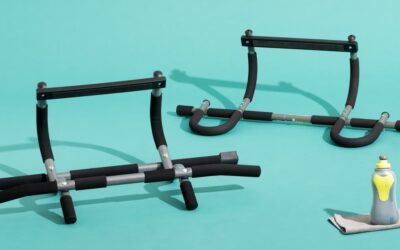After a mattress, a sofa is likely the most-used piece of furniture in a home. So durability is important. Beyond that, you need a sofa that fits the unique needs of your lifestyle and your home. Here are a few things to keep in mind:
Check the materials and construction. For most of the advice below, we talked to seasoned furniture upholsterer and author of Upholstery School, Sonnaz Nooranvary, who told us what she uses when designing her own custom furniture at House of Sonnaz (and what she looks for when shopping secondhand). She’s also the delightful upholstery expert behind BBC’s long-running show The Repair Shop.
The highest-quality sofas are admittedly very expensive. More moderately priced pieces may not hit all of the following notes, but the closer they come, the longer they’ll last.
- Frame: Whenever possible, look for hardwood or plywood (or a mix) instead of particleboard or medium-density fiberboard (MDF). All of our picks are made with either hardwood or furniture-grade plywood, both of which are repairable and sturdy. (Our budget pick, the IKEA Kivik, uses some fiberboard, along with plywood and hardwood; we made an exception for it, considering the price.) A sofa with an all-hardwood frame can get pricey, but if you can afford it, or can find one secondhand, it’s well worth the investment. Nooranvary uses hardwood frames when designing custom furniture and says that they should last at least 25 years. She said that you can usually tell that a sofa uses hardwood if it’s notably heavy to lift.
- Legs: If possible, look for integrated legs that are part of the frame, as opposed to screwed-on ones. This depends on the design of each sofa, but Nooranvary prefers them for the strength and durability of the overall piece.
- Suspension: Nooranvary prefers to use coil springs, which are more common in custom-made furniture, since they require a high level of expertise to install and can be tailored to each cushion. Our sofa picks use a mix of suspension systems that are common in mass-produced sofas, such as zigzag springs (also called sinuous springs) and poly-webbing. To check for quality, sit on the sofa; squeaking can be a sign of improperly installed or loose springs and metal-on-metal rubbing.
- Cushions: Latex foams and natural-fiber fillings (such as horsehair or coir), which Nooranvary uses in her high-end designs, minimize the use of synthetic, and potentially toxic, chemicals and don’t disintegrate as much over time as synthetic foams. Synthetic foams tend to be more affordable, however, and the better options are labeled as high-density or high-resiliency foams, which all of our picks use. “I have covered chairs that are 100 years old, and I can still reuse the traditional [natural-fiber] stuffing (with a little more cotton wadding to plump it up a bit),” says Nooranvary.
- Upholstery: It’s always a good sign if the fabric lists an official rub count, which means it’s been tested for durability. But besides rub count, which tends to be the most well-known measure, Lynne Willis, executive director at the Association for Contract Textiles, says to check the label, or ask the manufacturer, whether a fabric lists other durability standards like seam slippage, which tests how strong seams are when pulled apart — an important factor on seat cushions specifically.
Carefully consider all of the listed dimensions. If you aren’t able to check out a sofa in person, we can’t stress enough the importance of confirming the listed dimensions online. And then pull out a measuring tape to get a sense of what that sofa will be like in your home. Compare those dimensions with your current sofa, too. It’s helpful to look at the overall dimensions to get a sense of the footprint and overall volume. But the dimensions for comfort are just as important: They include seat depth, seat height, armrest height, back height, and clearance from the floor (as in, whether there is any space beneath the sofa). If a dimension is missing, reach out to the company and ask about it. There’s still no replacement for trying a sofa in person, though, because even similar dimensions sometimes feel very different depending on the sofa’s shape and firmness level.
Check the delivery process. Some sofas ship fully assembled, some ship with detached legs and separate cushions, and others require more-extensive, IKEA-style assembly. If you’re not handy, or if you don’t have someone who can help, check whether the company has white-glove delivery options that include in-room delivery, assembly, or both. Sofas that need assembly, like those from Burrow and Sabai, usually ship in several smaller boxes; this is ideal for narrow hallways or walk-ups. Companies usually also list the dimensions of all of the boxes, so you can confirm whether they’ll fit around tight corners and through doors. (If you can’t find the box dimensions listed for your item, reach out to the company for information.)
Measure your entryways. Survey the easiest points of entry into your home, along with any issues that could complicate delivery. A steep stairway, a narrow corridor, a low overhanging fixture, or a small elevator can all present insurmountable challenges. We found Room & Board’s “How to Measure Your Space for a Perfect Furniture Delivery” particularly insightful for visualizing unforeseen obstacles.
What about buying sofas secondhand?
When you’re buying used furniture, specs are not usually available, but you can still inspect items for weak spots and aging. For sofas and large pieces, Nooranvary suggests prioritizing the frame quality and then the coil spring base. For upholstered chairs, she says, it’s generally a safe bet that anything made during and before the 1950s will be a relatively sound purchase. “These types of pieces are always worth investing in,” she says.
Pick the right sofa for your lifestyle
Give some thought to your personal seating needs. To help determine what best serves your lifestyle, think through the following questions:
How will you use the sofa?
When designing bespoke furniture at House of Sonnaz, Sonnaz Nooranvary asks her clients whether they’re looking for something comfortable or more of a statement piece. She also asks: “Are you looking to relax on a huge sofa and snuggle up watching a film for the night? Or are you having tea and a slice of cake together? Does your room need to be multipurpose?” If you prefer to sit upright while reading, knitting, or using a phone, a firmer, more-tailored sofa with an upright back will probably feel more comfortable. If you like to lounge or nap on your sofa, you may want deeper seats and fluffier cushions to sink into.
How often do you entertain guests?
When you socialize, do you mind squeezing in closely with others? Or do you prefer for everyone to have their own space? Upright and firmer, shallower sofas are better for socializing and eating snacks off of a coffee table. Deep sofas or sectionals with chaises can let multiple people spread out and lounge comfortably.
Who will use this sofa, and what are their needs?
If you have specific physical seating needs or preferences, such as a high seat height, firmer cushions, or more back support, you are probably already shopping with those specs in mind. But you may want to take into account the comfort of others who visit frequently. For instance, a short seat height can be taxing on arthritic knees, and a shallow seat depth can be uncomfortable for people of above-average height.
Do you have kids or pets?
Taking note of the type of damage your last sofa endured will help you determine the kinds of materials you should focus on for your new couch.
- Stains: “Performance fabrics,” a catch-all term for fabrics that are easy to clean or stain-resistant, are the least hassle to maintain. Leather is also simple to wipe down, with the right cleaning methods, but pet claws can scratch it up badly. Leather also needs regular conditioning to remain less susceptible to damage. But if you don’t mind a worn-in look, it can be a great choice.
- Thinning and tears: Upholstery fabrics with a high rub count are tested to withstand more day-to-day abrasion. The Association for Contract Textiles (ACT) recommends materials with counts of at least 15,000 Wyzenbeek double rubs and 20,000 Martindale cycles for low-traffic, residential use. Look for sofas that use fabrics listing a rub count, or ask the company if any of its fabrics have a listed rub count. For an added layer of protection, consider a sofa with a slipcover or upholstery that you can remove and launder (or replace down the road).
- Sagging cushions: If kids will be jumping on your couch, take note of the type of cushions used. Down-filled cushions on couches like the Sixpenny model need regular fluffing to keep the sofa looking put-together, whereas firmer foam cushions, as on the Sabai model, require less maintenance.
Do your floors scratch easily?
If you have delicate wood floors, consider the sofa’s legs. Metal hairpin legs can scrape wood floors, and they can’t easily be covered with felt protectors. As a last resort, a well-placed area rug can keep sofa feet from damaging a floor (but you may damage your rug instead).






0 Comments